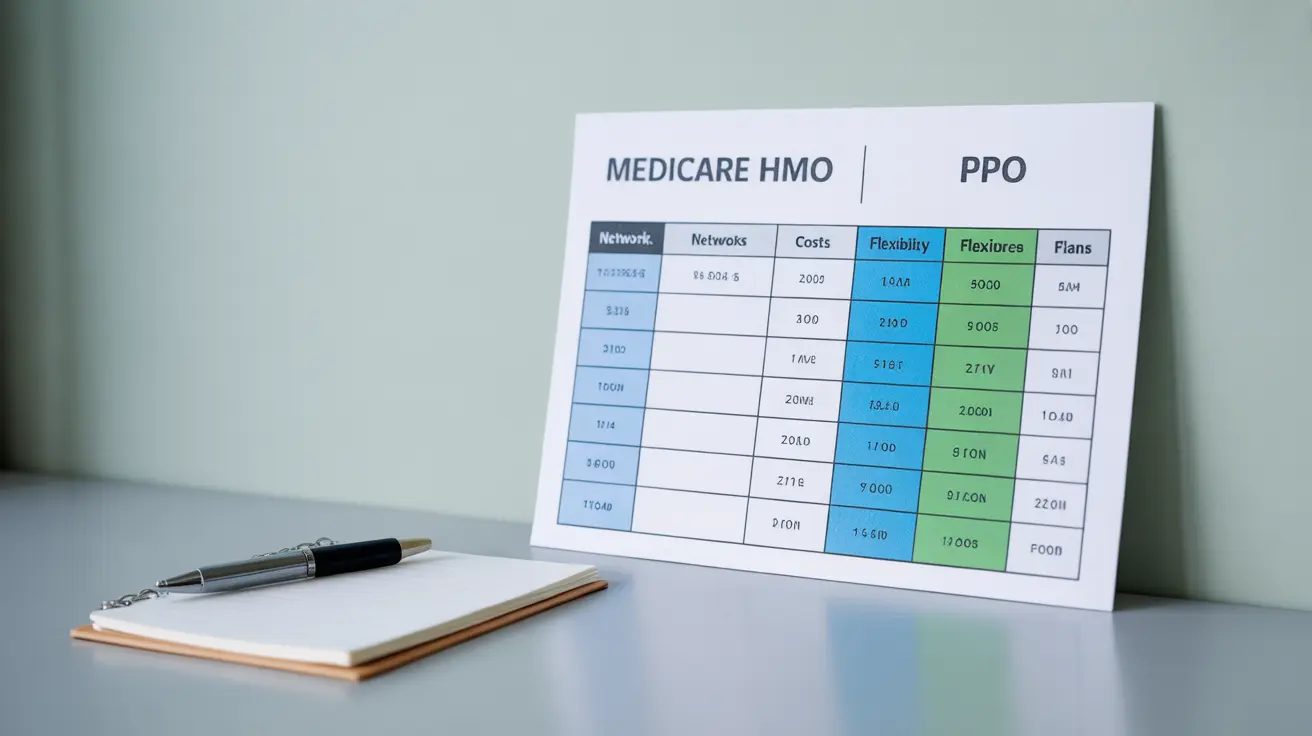Choosing between a Medicare HMO (Health Maintenance Organization) and PPO (Preferred Provider Organization) plan is a crucial decision that can significantly impact your healthcare coverage and costs. Understanding the key differences between these two popular Medicare Advantage options will help you make an informed choice that best suits your healthcare needs and budget.
Let's explore the fundamental distinctions between Medicare HMO and PPO plans, including network requirements, costs, and flexibility in choosing healthcare providers.
Understanding Medicare HMO Plans
Medicare HMO plans operate within a specific network of healthcare providers and facilities. These plans typically offer more structured care coordination but come with certain restrictions.
Key Features of HMO Plans
With a Medicare HMO plan, you'll need to:
- Choose a primary care physician (PCP) who coordinates your care
- Get referrals from your PCP to see specialists
- Use in-network providers for covered services
- Obtain prior authorization for certain procedures
Cost Structure of HMO Plans
Medicare HMO plans generally feature:
- Lower monthly premiums
- Fixed copayments for doctor visits
- Predictable out-of-pocket costs
- Limited coverage for out-of-network care
Understanding Medicare PPO Plans
Medicare PPO plans offer more flexibility in choosing healthcare providers but typically come with higher costs. These plans allow you to see both in-network and out-of-network providers.
Key Features of PPO Plans
With a Medicare PPO plan, you can:
- See any healthcare provider without a referral
- Visit specialists directly without PCP approval
- Receive care both in and out of network
- Travel more freely while maintaining coverage
Cost Structure of PPO Plans
Medicare PPO plans typically include:
- Higher monthly premiums
- More variable out-of-pocket costs
- Lower costs for in-network care
- Higher costs for out-of-network services
Network Coverage and Provider Choice
The most significant difference between HMO and PPO plans lies in network coverage and provider choice. HMOs require you to stay within network except for emergencies, while PPOs offer the flexibility to see out-of-network providers at a higher cost.
Enrollment and Switching Plans
You can enroll in or switch between Medicare HMO and PPO plans during specific enrollment periods, including the Annual Election Period (October 15 - December 7) and Medicare Advantage Open Enrollment Period (January 1 - March 31).
Frequently Asked Questions
What is the main difference between Medicare HMO and PPO plans?
The main difference is network flexibility. HMO plans require you to use in-network providers and get referrals for specialists, while PPO plans allow you to see both in-network and out-of-network providers without referrals, though at higher costs for out-of-network care.
How do costs compare between Medicare HMO and PPO plans?
HMO plans typically have lower monthly premiums and more predictable out-of-pocket costs but require in-network care. PPO plans generally have higher monthly premiums but offer more flexibility in provider choice, with lower costs for in-network care and higher costs for out-of-network services.
Can I see any doctor I want with a Medicare HMO or PPO plan?
With a PPO plan, you can see any doctor, though out-of-network providers will cost more. With an HMO plan, you must see in-network providers except in emergencies, or the services won't be covered.
Do Medicare HMO plans require a primary care physician and referrals to see specialists?
Yes, Medicare HMO plans require you to choose a primary care physician and obtain referrals to see specialists. PPO plans do not have these requirements.
When can I switch between Medicare HMO and PPO plans?
You can switch plans during the Annual Election Period (October 15 - December 7) or during the Medicare Advantage Open Enrollment Period (January 1 - March 31) if you're already enrolled in a Medicare Advantage plan.




